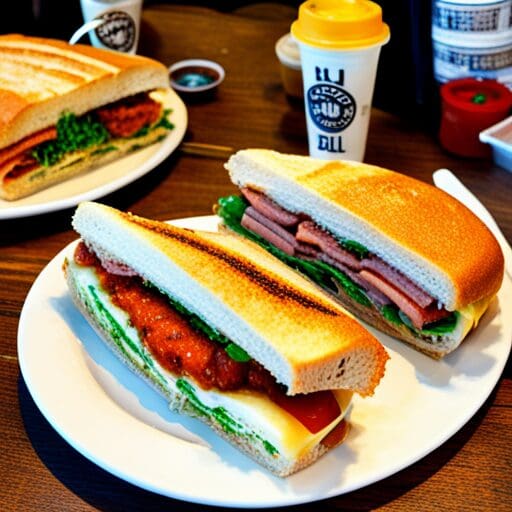A Journey Through the Evolution of Our Culinary Heritage
From the classic New York-style deli to the fusion food trucks of LA, the delicatessen culture of America has experienced an evolution that has brought together an array of influences from across the globe. These food establishments, featuring savory meats, pickles, cheeses, and bread, originated as an amalgamation of Eastern European and German immigrant traditions. However, over time they have branched out to become culinary spaces for experimentation, innovation, and modernization. Let’s take a brief historical journey of the delicatessen culture in America, which is sure to give you a perception-shifting view of our cultural identity.
Origin of “Delicatessen”
The origin of the term “delicatessen” comes from the German term “delikatessen,” meaning “delicacies” or “fine foods”. The selection of meat products was particularly rigorous and specified to specific standards of tradition and quality, underscored by the ever-present need to maintain the cultural heritage. Today, many traditional delicatessens are still family-owned and operated establishments, featuring the same recipes that have been passed down for generations.
The First Deli
The first delicatessen in America was opened in 1888 by Sussman Volk and referred to as “S. Volk & Co.,” located on New York’s Lower East Side. Delicatessens began as retail stores that sold a range of food items, including butter, coffee, and candy. However, as time passed, the occurrence of the Jewish delicatessen in America became closely associated with the cuisine and culture of New York City. Then, a few years later, the delicatessen made its way to other major cities, and eventually, across America.
The Rise of the Deli Chain
The invention of the first sandwich, popularized by a Jewish deli in New York City, began the era of the deli chain. This was followed by the of well-known chains such as Stage, Carnegie, and Katz’s. With their growing popularity throughout America in the early 20th century, these delis began to adopt classic New York-style deli elements such as the pastrami sandwich. And it wasn’t long before delicatessens expanded into other major cities like Chicago, Boston, and Philadelphia.
The influx of Italian immigrants in the early 1900s led to the emergence of Italian Delis across America. Italian delis such as Angelo’s began appearing selling cured meats, Italian cheese, bread, cheeses, sandwiches and various condiments. They quickly grew in popularity due to their delicious flavors and affordability. .
New York-Style Deli

The characteristic flavor and style of the New York-style delicatessen remain a beloved part of America’s food culture. This style features the classic pastrami sandwich, pickles, and rye bread, as well as other signature deli items such as whitefish salad and chopped liver. It’s a flavor that has been embraced by many cultures and continues to be a favorite among locals and visitors alike.
Impact of Fast Food
In the 1950s through 70s, millennials saw the rise of fast food, a culture that had an adverse impact on delicatessen culture. Since fast food was heavily marketed, Americans began the transition from delicatessens to fast food restaurants. However, in the 1980s, a shift to a healthier lifestyle gave rise to more restaurants that served lean meats and salads. This trend gave rise to the new style of delicatessen-style restaurants, which featured locally sourced ingredients (locavorism), healthier options, and sustainable freshness.
Delicatessen Innovations and the Creation of “Fusion Cuisine”
The 21st century has seen a dramatic rise in culinary experimentation with delicatessens. The combination of traditional deli fare with other flavors, such as Latin American or Asian cuisines, has helped to create unique fusion dishes. In addition, modern-day delis have adopted healthier ingredients and menu items such as vegetarian and vegan options. These innovations have led to the emergence of new delicatessen restaurants, food trucks, and pop-ups.
People were enthusiastic about high-quality meats, cheeses, salads, and soups being served in a more natural atmosphere than traditional delis. With this, the fusion delicatessen was born, providing elements of various culinary traditions that blended and matched in expressive, creative dishes. San Francisco became one of the pioneers of this style of delicatessen, combining locally sourced ingredients with high-quality cuts of meat, cheeses, and homemade condiments.
Modern Day Delicatessens
Today’s delicatessen culture has been heavily influenced by modern American food trends such as fusion cuisine, locavorism, and farm-to-table practices. Food trucks have become a staple of modern cities, serving up deliciously unique sandwiches and salads made from local ingredients. Additionally, many restaurants are now offering “deli-style” options such as charcuterie boards, cured meats, artisanal cheeses, homemade pickles, and fresh bread.
Overall, the evolution of the delicatessen in America is a reflection of our cultural identity. It’s an ever-evolving, dynamic cuisine that incorporates global influences and brings together a variety of flavors in delicious and innovative dishes. From classic Jewish delis to the modern fusion delis of today, delicatessens continue to be a source of delight for diners all over the world.
Delicatessen Around The World
The popularity of delicatessen culture has spread far beyond America’s borders. Across Europe, specialty delicatessens have become an integral part of the local culinary landscape. From Italian salumerie and German Metzgerei to British delicatessens, their influence can be seen in dishes ranging from sausages and cured meats to cheeses, salads, and sandwiches.
In Asia, delicatessen culture has also taken root with a range of regional variations from countries such as Japan, Korea, and India. In Japan, delicatessens offer traditional dishes such as sushi, tempura, and ramen. Korean delicatessen cuisine features a range of pickles and fermented foods like kimchi. And in India, many regional delicatessens feature savory snacks such as chaats (spicy chickpea fritters) and samosas (fried dumplings).
No matter where you go, delicatessen culture continues to be a source of delight for food lovers all over the world. Whether it’s a classic pastrami sandwich from New York or a vibrant chaat from India, the creativity behind delicatessen cuisine is sure to satisfy any palate.
The Future of Delicatessen Culture
As America’s culinary culture continues to evolve, it will be interesting to observe the new trends and innovations that come out of delicatessens. It is clear that with each adaptation comes a unique way of blending cultural influences together, creating an even more diverse experience. We can expect to see further developments in the field of fusion cuisine, healthier plant-based options, and a return to some of the traditions that make delicatessens so special.
Delicatessen culture is always changing, yet in many ways, it is still firmly rooted in its origins. From NYC to LA, this dynamic food culture gives us an insight into our shared culinary heritage and identity. As Americans, it is important to recognize and appreciate this evolution, so that we can continue to create meaningful experiences that honor the past while creating a vision for the future.
The rise of delicatessens has been integral to the American food industry, and it now provides food lovers with incredibly diverse culinary experiences. From simple and traditional delis to fusion-style delicatessens, and everything in between, flavors are crafted using flavorful, high-quality ingredients. This cultural transformation has presented an excellent opportunity for food lovers to satisfy their cravings, challenge their palates, and either maintain or adapt their cultural identities. So the next time you step into a delicatessen, appreciate the rich and diverse history behind the food and take a bite out of the sumptuous history of American cuisine.

